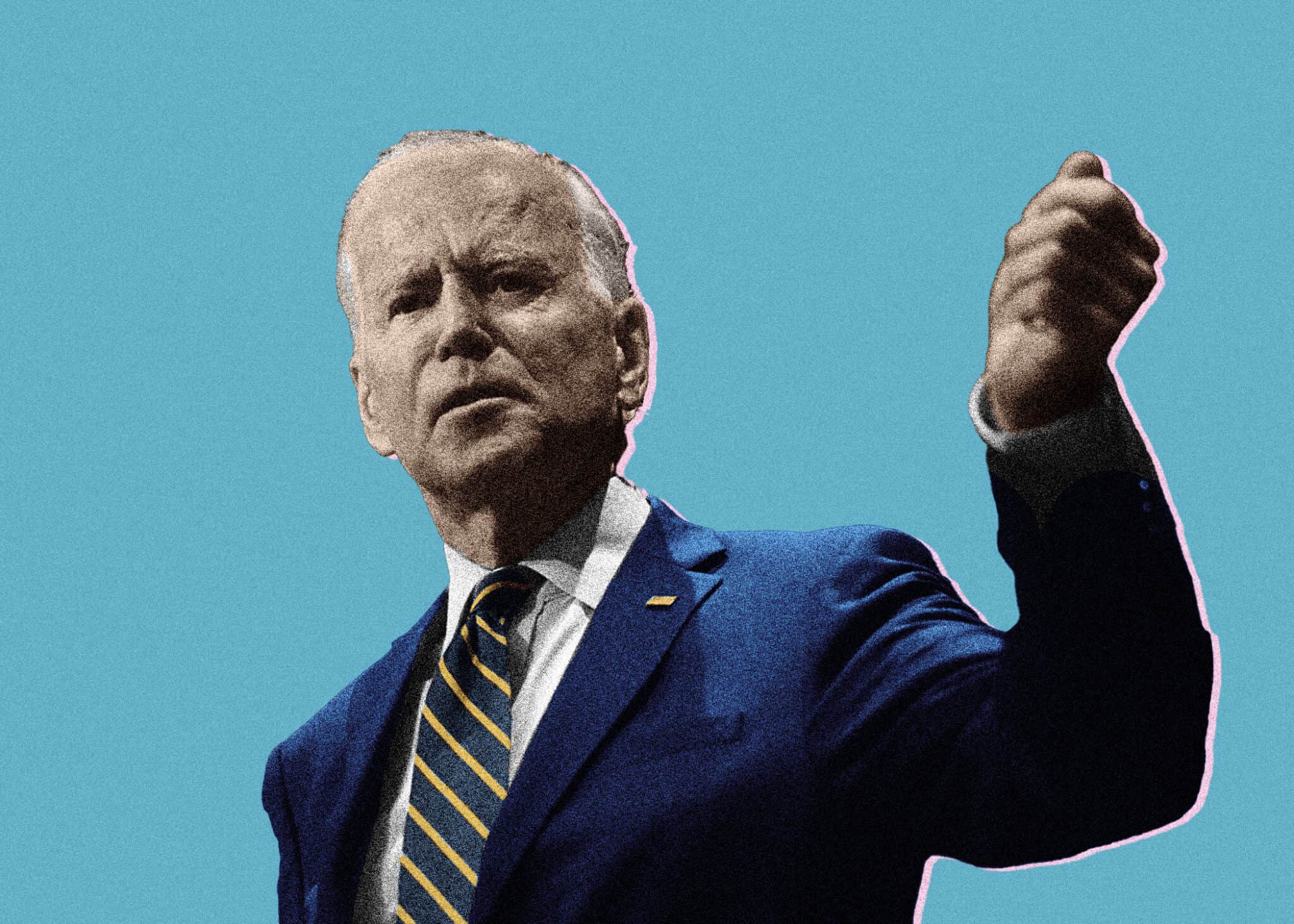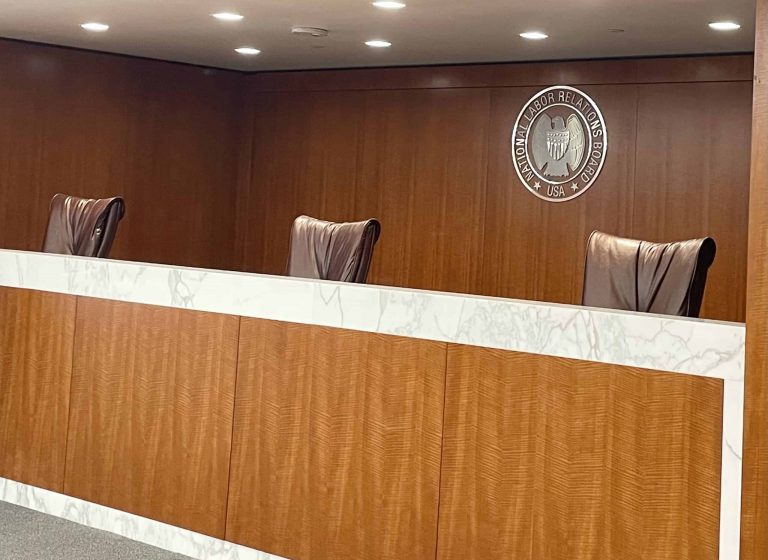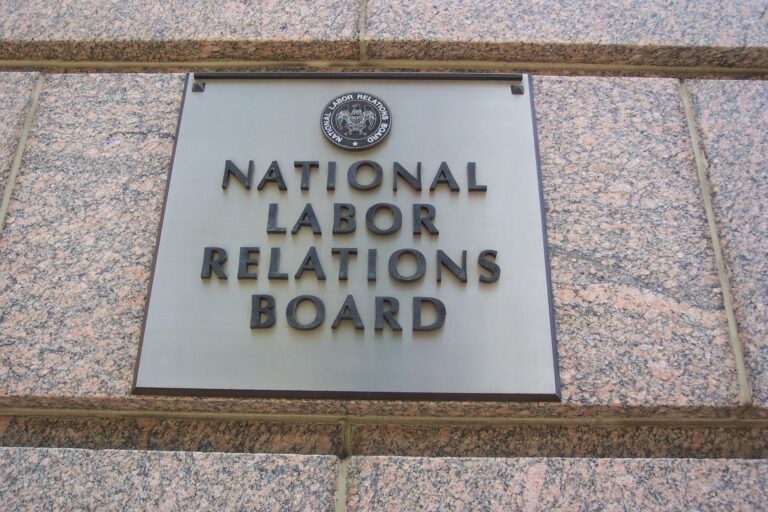
Tascha Shahriari-Parsa is a student at Harvard Law School.

Jason Vazquez is a staff attorney at the International Brotherhood of Teamsters. He graduated from Harvard Law School in 2023. His writing on this blog reflects his personal views and should not be attributed to the IBT.
On April 26, 2021, President Biden, who pledged on the campaign trail to be “the most pro-union president you’ve ever seen,” signed Executive Order 14025 establishing the White House Task Force on Worker Organizing and Empowerment. The Task Force’s mission was simple enough — to “identify executive branch policies, practices, and programs that could . . . promote [the Biden] Administration’s policy of support for worker power, worker organizing, and collective bargaining.”
Last Monday, the Task Force released its report, detailing an impressive set of nearly 70 recommendations for executive branch action designed to promote labor organizing and collective bargaining for workers in both the public and private sectors.
Overall, the Task Force’s nearly six dozen proposals can be roughly sorted into four categories:
- that the federal government, as the largest employer in the country, promote workplace standards and facilitate organizing efforts among its own vast workforce;
- that administrative agencies employ their regulatory, policymaking, and enforcement authority to promote union organizing and collective bargaining among private employers within their jurisdiction;
- that the federal government leverage its immense influence as a participant in the private commercial market to support unions and workers when choosing which private firms to transact and contract with;
- that executive officials and administrative agencies act as labor advocates, using their existing administrative infrastructure and platforms as well as launching new, coordinated, multi-agency educational campaigns to increase awareness of labor rights and workplace standards.
I. The Federal Government as a Model Employer
First, the report calls upon executive departments and administrative agencies, which collectively employ millions of individuals, to serve as leading examples of how employers ought to respect and promote employment standards among their workforce and make it easier for their workers to join unions. Some notable examples of these recommendations include those urging agencies to:
- publish union information in their job postings;
- improve data on bargaining unit eligibility;
- periodically apprise bargaining unit employees, and supervisors, of labor rights and employment protections under federal law;
- provide employees with contact information of union representatives;
- collect better data on union membership in the federal sector;
- make it easier for existing union members to pay dues;
- and, perhaps most importantly, remove unnecessary barriers that impede the expansion of bargaining unit coverage to the more than 300,000 federal employee who, though eligible to be represented by a union, are not.
The report also includes several recommendations that would provide greater union access to federal property to allow organizers to speak with workers, including those employed by private federal contractors. To provide one example, the report asks the Department of Defense to update its guidelines “to ensure that union organizers can have access to employees . . . on its bases and installations.”
II. Regulation and Enforcement
Beyond improving agencies’ own internal labor relations, several of the report’s recommendations urge administrative agencies to invoke their regulatory and policymaking authority and ratchet up their prosecutorial activities to stimulate labor organizing and facilitate collective bargaining among private firms.
The report calls for a slate of new, or amended, regulations to be promulgated by the Department of Labor and a handful of administrative agencies, designed to raise wages and promote collective bargaining among firms receiving lucrative federal contracts. The report proposes that the DOL, for example, issue new regulations to ensure that federal contractors furnish prevailing wages, which would not only raise pay for those laboring on federally funded projects, but also protect unionized companies from facing a competitive disadvantage in the bidding process. The report also recommends that various agencies issue new regulations or guidelines to increase the likelihood that federal contracts be awarded to unionized companies. Moreover, recognizing the difficulty that unions often encounter in reaching first contracts, the report proposes that the Federal Acquisition Regulatory Council amend its existing regulations to urge federal contractors to engage the federal mediation services while bargaining with any newly certified unions on federally funded projects.
Additionally, the report urges the DOL and other agencies to escalate enforcement of various statutes, regulations, and executive orders. The report instructs the DOL, for example, to:
- ensure that federal dollars are not spent on anti-union activity;
- bolster its enforcement of laws that require employers to disclose their dealings with anti-union consultants;
- prioritize enforcement actions that prevent the pervasive misclassification of employees as independent contractors;
- and strengthen its efforts to provide referrals to the National Labor Relations Board when workers file complaints with the DOL alleging unlawful interferences with their protected Section 7 rights.
The report also directs the Department of Homeland Security to implement immigration enforcement policies that protect organizing rights and enforce workplace standards.
III. The Federal Government as a Market Participant
The report also recommends that agencies — as participants in the private market — strategically wield their immense purchasing power to preference firms that demonstrate a commitment to strong workplace standards, or at least to induce competing firms to adopt such standards. The report instructs the Department of Agriculture, for example, to “use its purchasing power” to pressure subgrantees and their contractors to employ full-time workers in school cafeterias. Additionally, the report recommends that several agencies expand the use of project labor agreements, preference developers that commit to those agreements, and rely on labor union participation as an evaluation factor when assigning contracts.
IV. The Bully Pulpit
Finally, the report:
- calls upon “all components of the Biden-Harris administration” to publicly advocate for the benefits of labor organizing and collective bargaining;
- instructs the DOL to lead a coordinated, government-wide “know your rights” initiative to increase awareness of federally protected labor rights;
- “strongly encourages” core labor-adjacent agencies to expand and refine their outreach efforts to prompt workers — especially young ones — to organize, including posting accessible materials on social media platforms;
- and tasks the DOL with creating a new resource center for workers, employers, and the public elucidating the benefits of unionization and labor-management partnerships.
Though it remains unclear how many of its recommendations will be implemented — or how effective they might be — the Task Force’s report is notable for expressly committing the executive branch to empowering unions and for its aggressive advocacy of a pro-union vision for the future of the U.S. economy. The report frankly acknowledges that “growing economic inequality . . . [is] caused, in part, by the declining percentage of workers represented by unions,” and insists that the labor movement is “critical to growing the middle class, building an economy that puts workers first, and strengthening our democracy.” Acknowledging that “union density isn’t low because Americans don’t like unions” — but because of a restrictive and outdated labor law regime — the report candidly concedes that executive and administrative initiatives are no replacement for “robust legislative change” and cannot alone reverse the decades-long decline of union density in the United States. But as labor unions continue to dwindle, and labor law becomes increasingly ossified, labor advocates are seeking any point of entry that may spark a revitalization of collective power among the American workforce. It’s possible that the Task Force’s recommendations — no matter how limited and technical they may seem — could help reset, or at least mitigate, the various feedback loops that continue to contribute to American labor’s dismal decline.









Daily News & Commentary
Start your day with our roundup of the latest labor developments. See all
July 11
Regional director orders election without Board quorum; 9th Circuit pauses injunction on Executive Order; Driverless car legislation in Massachusetts
July 10
Wisconsin Supreme Court holds UW Health nurses are not covered by Wisconsin’s Labor Peace Act; a district judge denies the request to stay an injunction pending appeal; the NFLPA appeals an arbitration decision.
July 9
the Supreme Court allows Trump to proceed with mass firings; Secretary of Agriculture suggests Medicaid recipients replace deported migrant farmworkers; DHS ends TPS for Nicaragua and Honduras
July 8
In today’s news and commentary, Apple wins at the Fifth Circuit against the NLRB, Florida enacts a noncompete-friendly law, and complications with the No Tax on Tips in the Big Beautiful Bill. Apple won an appeal overturning a National Labor Relations Board (NLRB) decision that the company violated labor law by coercively questioning an employee […]
July 7
LA economy deals with fallout from ICE raids; a new appeal challenges the NCAA antitrust settlement; and the EPA places dissenting employees on leave.
July 6
Municipal workers in Philadelphia continue to strike; Zohran Mamdani collects union endorsements; UFCW grocery workers in California and Colorado reach tentative agreements.